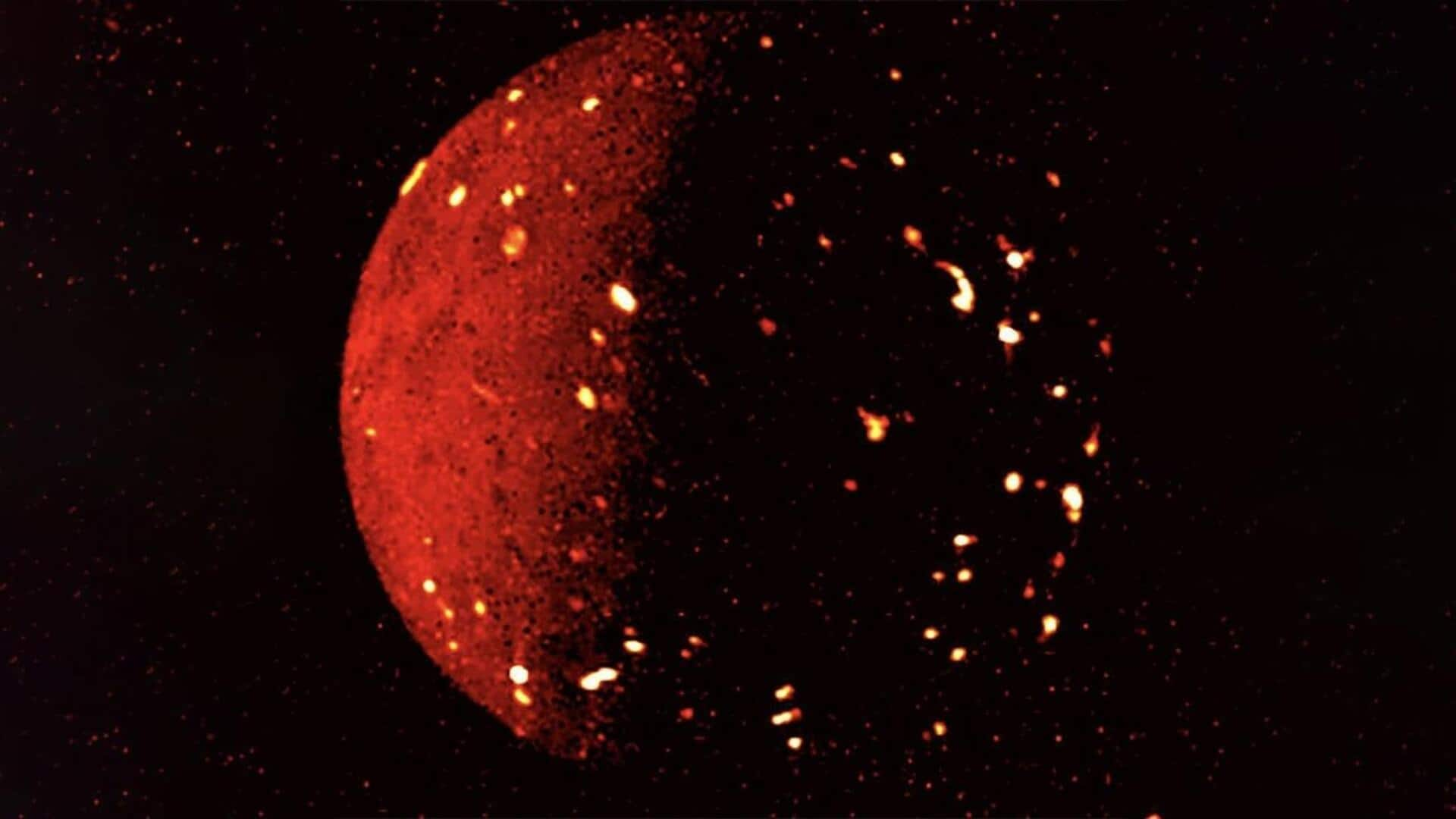
Mystery behind the hellish surface of Jupiter's moon Io revealed
What's the story
NASA's Juno probe has revealed that Jupiter's moon Io, the most volcanically active celestial body in our Solar System, is fully covered in lava lakes. Approximately 150 out of its 400 active volcanoes are erupting at any given time. "The whole surface of Io is covered by lava lakes contained in caldera-like features," said Alessandro Mura, an astrophysicist at Italy's National Institute for Astrophysics.
Gravitational influence
Gravitational tug-of-war fuels Io's volcanic activity
The intense volcanic activity on Io is a result of a complex gravitational interaction involving Jupiter and its other Galilean moons - Callisto, Europa, and Ganymede. This gravitational tug-of-war generates stress on Io's interior, producing heat that leads to widespread volcanism. "In the region of Io's surface in which we have the most complete data, we estimate about 3% of it is covered by one of these molten lava lakes," said Mura.
Juno's observations
Unprecedented details of Io's volcanic eruptions
The Juno probe has been conducting close flybys of Jupiter's moons, including Io, allowing scientists to observe volcanic eruptions and lava lakes on its surface in unprecedented detail. "We now have an idea of what is the most frequent type of volcanism on Io: enormous lakes of lava where magma goes up and down," Mura explained. Infrared observations captured by Juno's Jovian Infrared Auroral Mapper (JIRAM) have revealed heat signatures on the surface of Io.
Lake dynamics
Understanding the structure of Io's lava lakes
The lava lakes on Io consist of a ring of exposed liquid lava at the edges, a hardening crust in the center, and high lake walls where lava collects. "The walls are likely hundreds of meters high, which explains why magma is generally not observed spilling out of the paterae and moving across the moon's surface," Mura stated. This suggests that lava enters and drains from a magma reservoir below the surface, causing lakes to rise and fall.
Research findings
New insights into Io's volcanic processes
The central crust of the lava lakes on Io rubs against the sides as it moves up and down, breaking off edges and forming a ring of lava around the lake's perimeter. "The observations show fascinating new information on Io's volcanic processes," said Scott Bolton, Juno principal investigator at the Southwest Research Institute in the US. The research has been published in Nature Communications, providing valuable insights into this fiery celestial body.